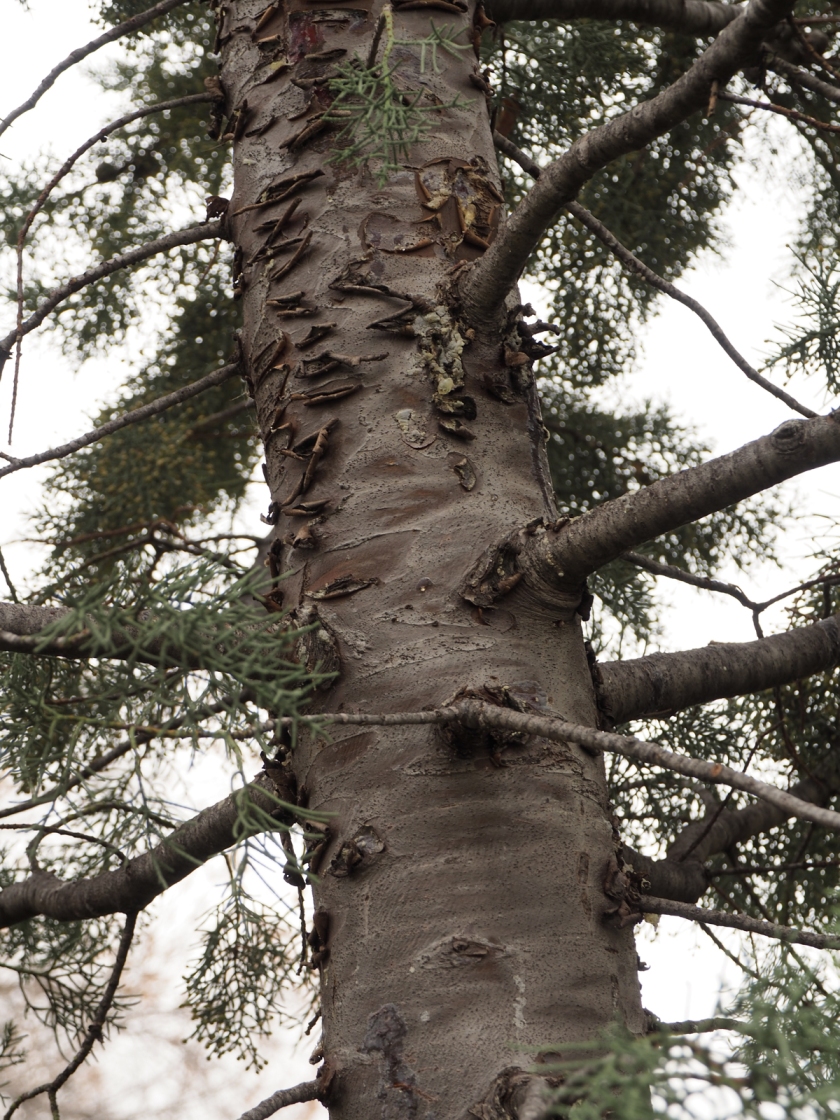
Modoc cypress does not have a widespread natural range and is found naturally only in northern California and southern Oregon. At least one source calls this species the northernmost and hardiest of its genus, but its need for sunlight and susceptibility to fire seem to contradict the hardiness designation.
In 1898 this species was discovered in Modoc County, California by the botanist Milo Samuel Baker, an important collector and teacher during the early years of the last century. Not only is this tree known as Baker Cypress, Modoc Cypress, or Siskiyou Cypress but there appears to be controversy as to its scientific name. Proposed Latin names are Callitropsis bakeri, Hesperocyparis bakeri, Cupressus macnabiana, or Neocupressus bakeri. The second name is currently used in the USDA plants database. The nomenclature used on the tree tour map and often on the web, is a fifth destination, Cupresses bakeri, one of the older names given in the Gymnosperm Database.
Modoc Cypress is listed in Threatened Conifers of the World and on the Red List as Vulnerable. This may have to do with fire suppression practices as the cones do not normally open to spread seed unless subjected to heat, but the tree can be susceptible to fire damage. The thin, curling bark of the younger trees may also be detrimental in a forest fire.  The reproduction cycle of this species is discussed on the above site. When the small, hard cones open, the seed is distributed by wind or rain.
The reproduction cycle of this species is discussed on the above site. When the small, hard cones open, the seed is distributed by wind or rain.

The tree may grow to fifty feet, but as one nursery website put it, “not in your lifetime, maybe your kids or grand kids.” No tree of this species is listed in Champion Trees, but the Gymnosperm Database lists a specimen in Oregon at 127′ as being the biggest known.
Although there is some information about the medicinal use of cypress, it is also classified as a neurotoxin and is often associated with death. The same website mentions some species are planted in church yards and cemeteries. In the correct dosage some species of cypress may have medicinal and cosmetic properties, but no specific mention is made of the Modoc Cypress.
In City Park Modoc Cypress (D197) may be found near the frog sculptures, closer to Sheldon Drive. To me the cypresses can be identified by a hazy aura around them, probably an illusion from their interesting leaves.


